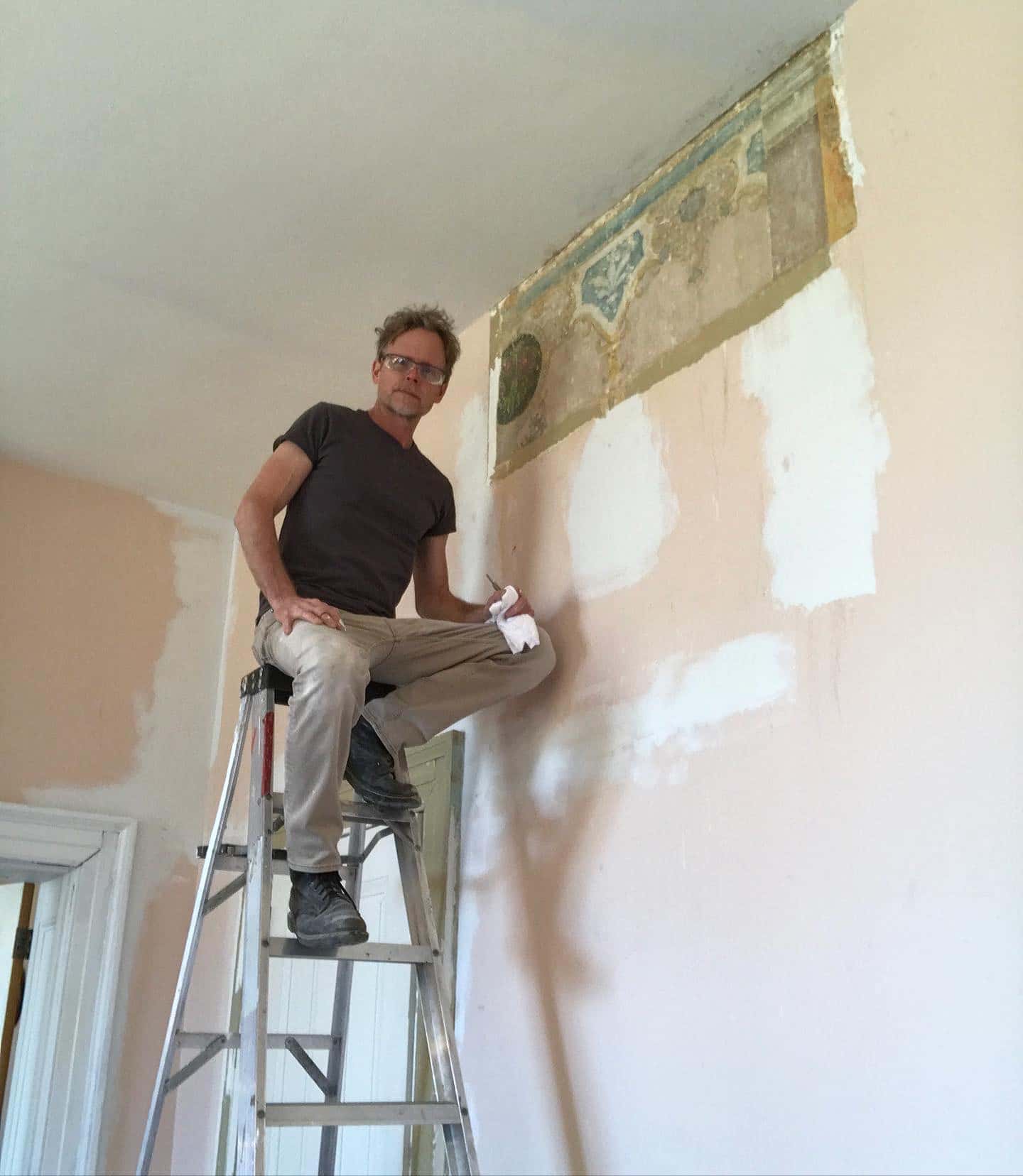
In 2002 paint historian Frank Welch conducted a paint analysis of the Cottage’s first and second floor rooms to learn more about how the painted finishes may have looked during Lincoln’s time.
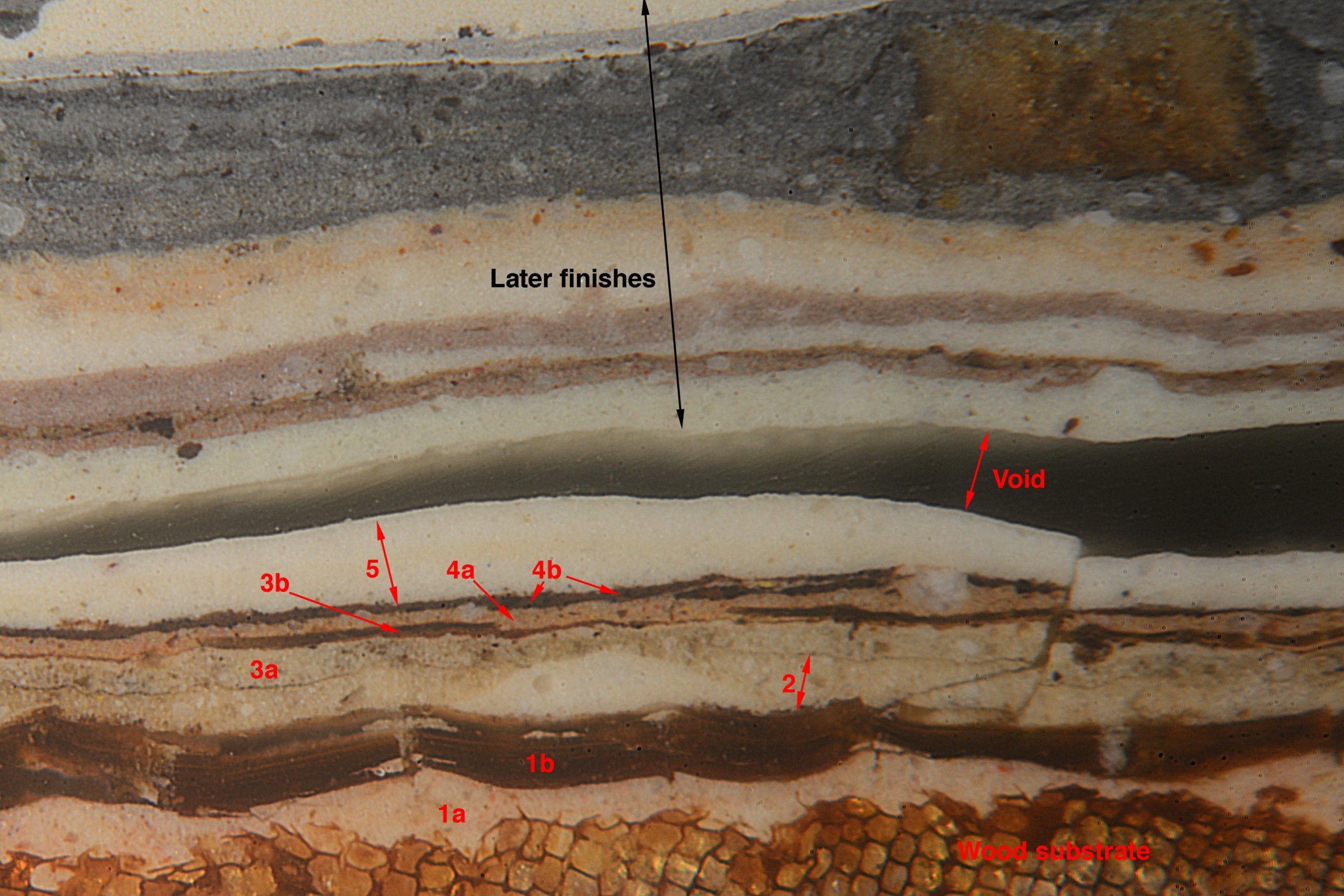
Typical Paint Analysis Cross Section
This past January, in preparation for preservation and restoration projects in the parlor, I reviewed Welch’s report and found a comment where he suggested that some of the colors he was finding in the parlor may be part of a painted frieze. A frieze is a “broad horizontal band of sculpted or painted decoration, especially on a wall near the ceiling.” With the recently refinished floors covered with construction paper and the parlor temporarily removed from the Cottage’s self-guided tours, this seemed like an opportune time to do a few paint exposures.

Senior Preservationist Jeff Larry working on the first exposure
An exposure is when layers of paint are carefully removed until the layer of interest is revealed. I ran a few tests using different types of chemical strippers and found that the Citrus Strip product was the least aggressive thus providing more control on the removal of over seventeen layers of paint on the walls. The stripper was applied and allowed to sit for thirty minutes. It was during this time I was able to return to the other projects in the parlor which included the removal of modern lock components, maintenance to historic locks and hardware as well as returning two doors to their original swing.
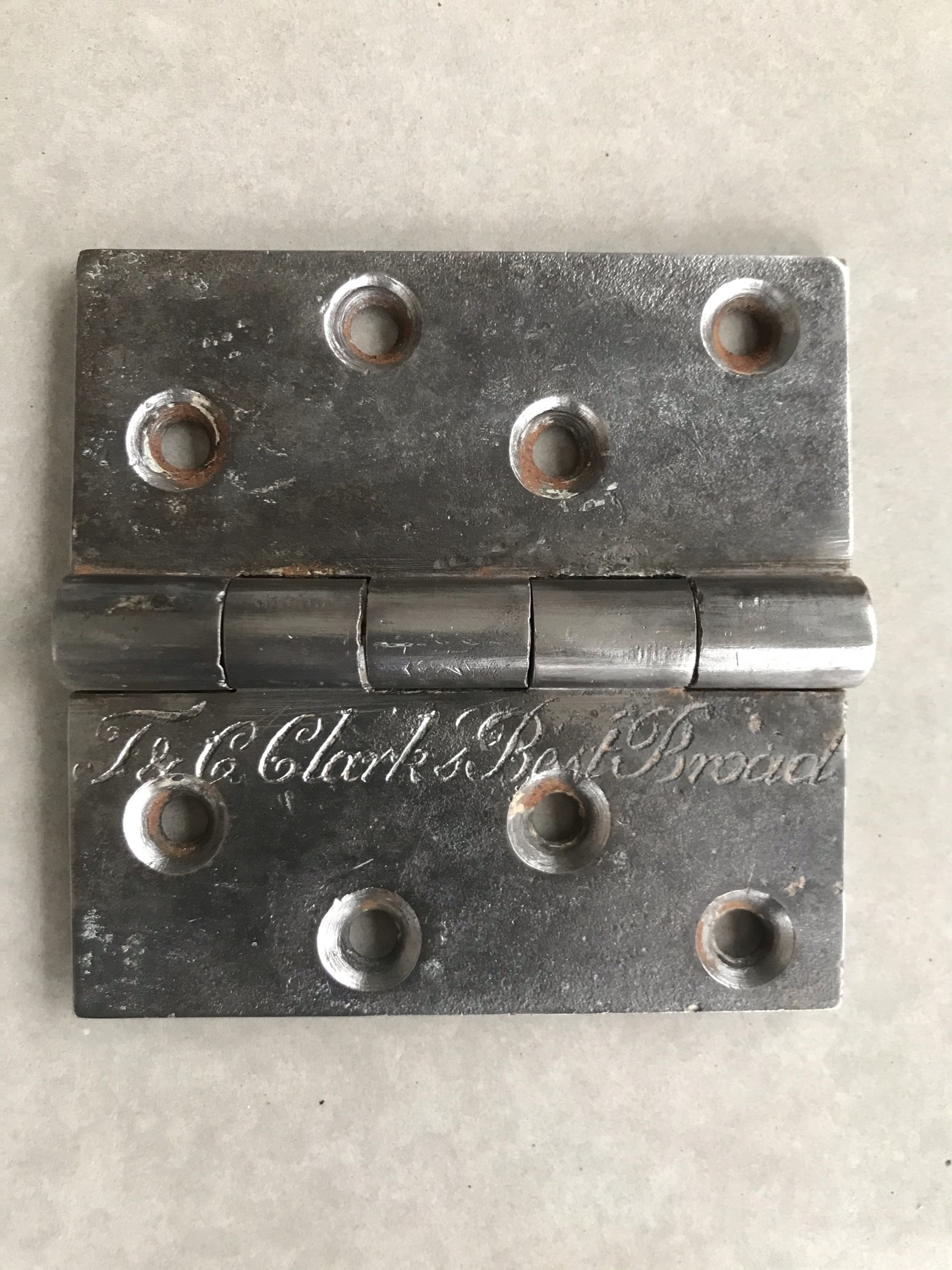
T & C Clark Best Broad hinge – One of the few remaining original hinges in the Cottage dating to 1842
The first exposure at the upper wall began at ten inches wide and ran down from the ceiling approximately fourteen inches. It was on the first day, after removing the 1950s institutional green paint, countless beiges, a very stubborn and glossy olive paint, and about five layers of yellow, that a band of bright blue began to appear. By the end of the following day I had completed exposing the entire motif.
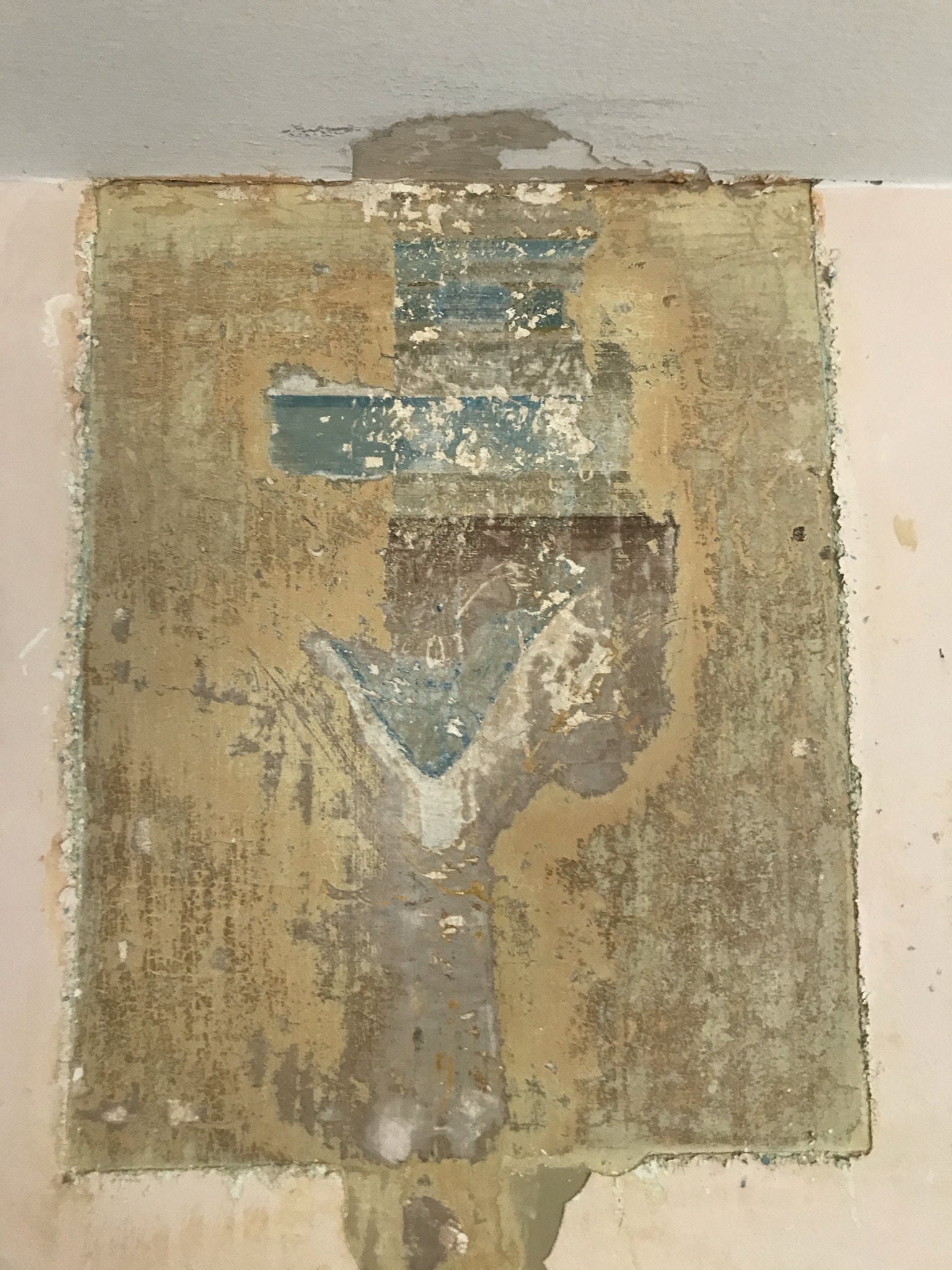
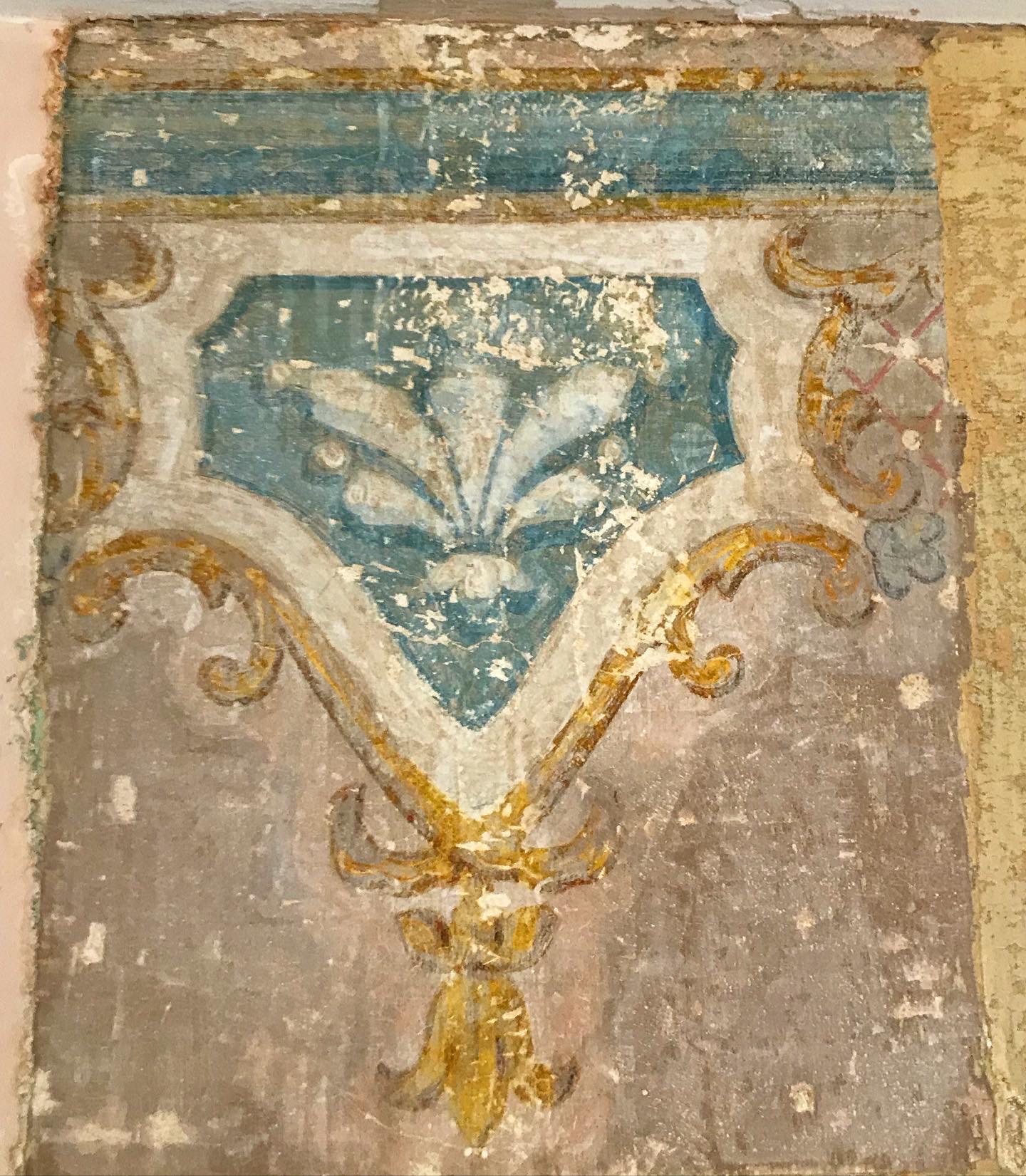
I decided to expand the exposure to the left and to the right and find a point where a pattern might emerge. To the right a different motif appeared followed by a repeat of the first motif.
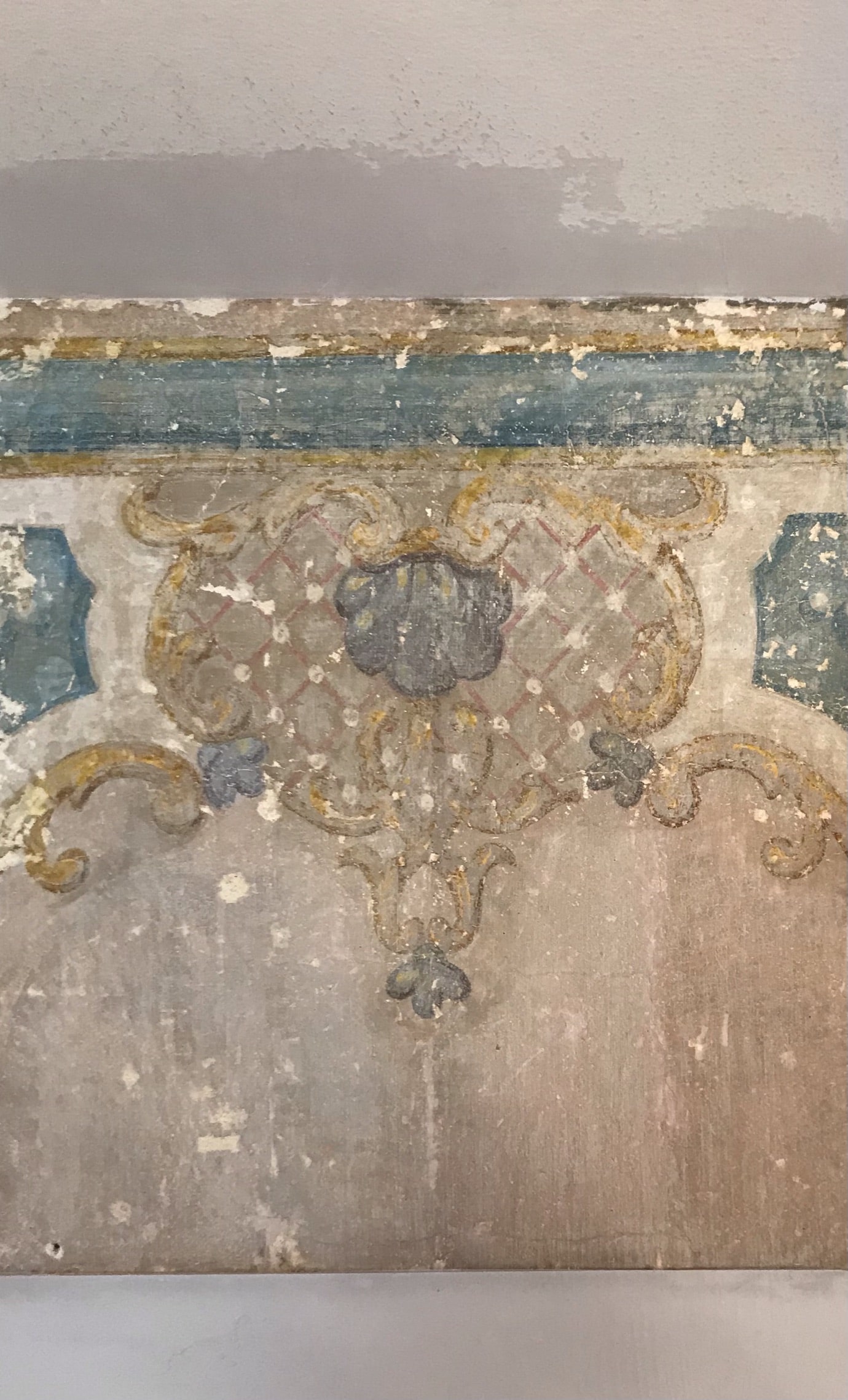
To the left I was surprised to find a black circle begin to take form and even more surprised when the black circle became surrounded by a decorative border and contained a cluster of purple flowers! Unfortunately, the remaining portion of the floral motif was destroyed at some point when the wall was channeled to install a metal pipe.
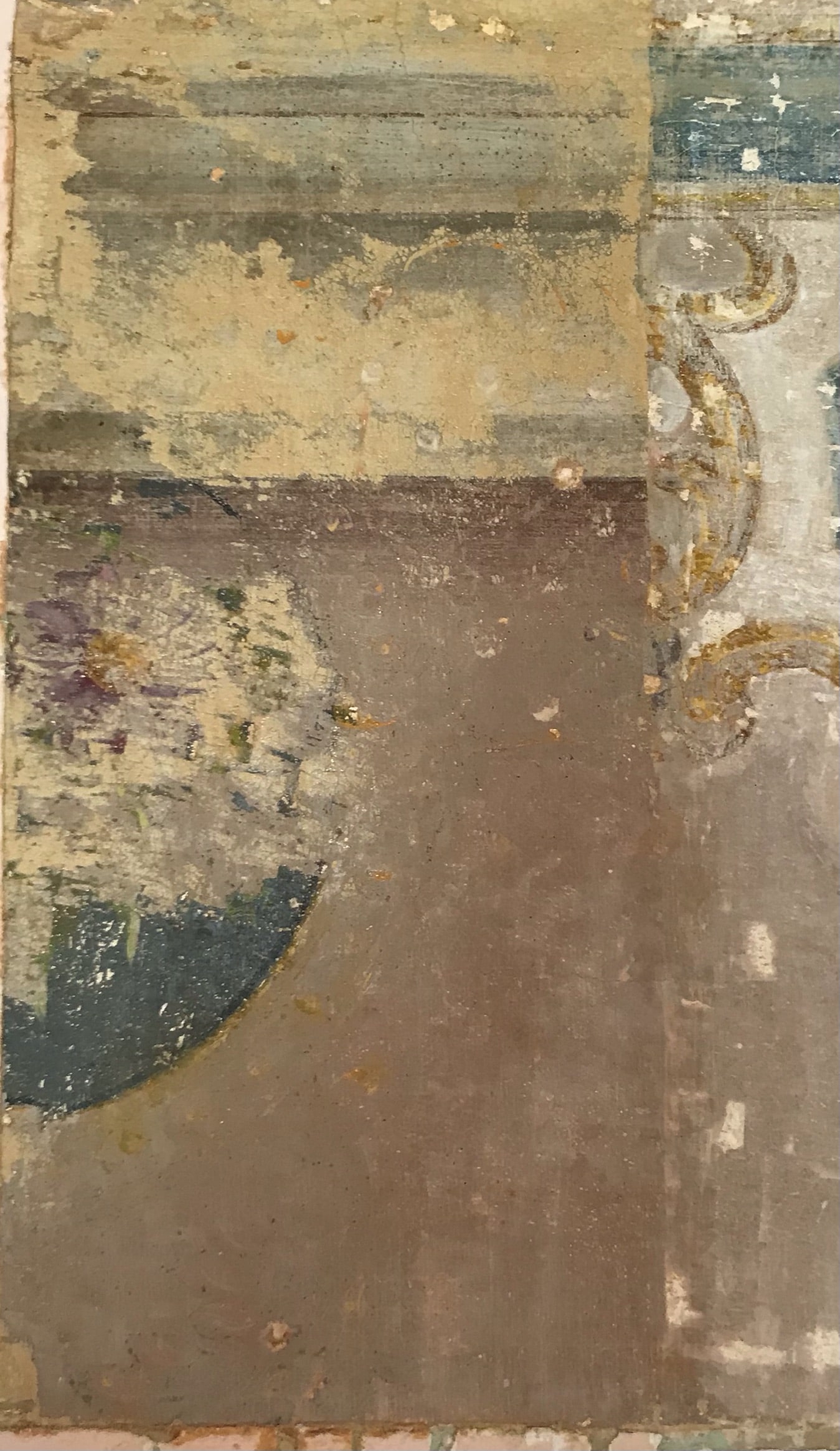
An additional exposure was completed above the parlor doors revealing a second generation of decorative painting. The subtle shading in the bands of color suggest an attempt to imitate a crown molding.
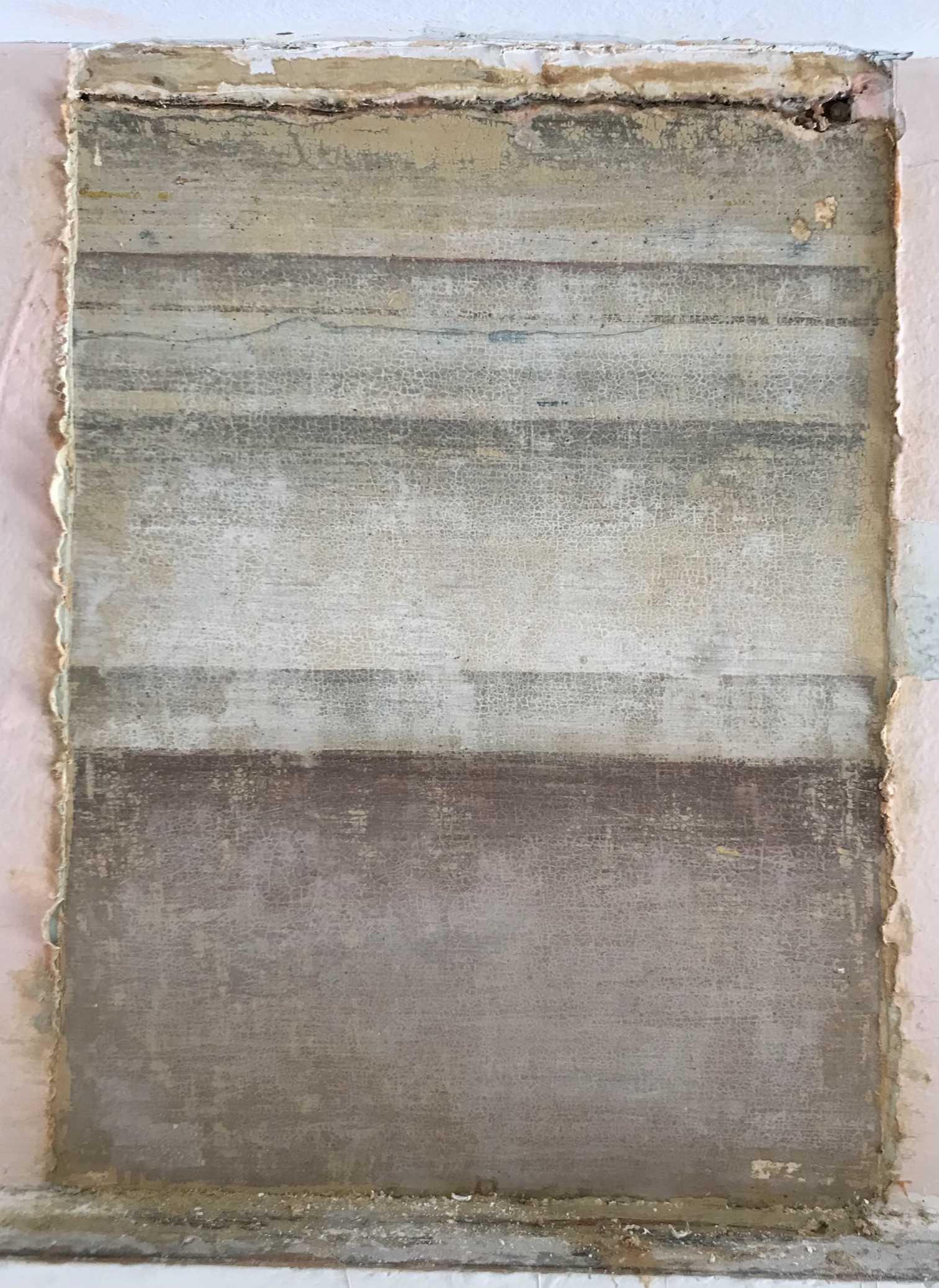
Welch’s analysis also notes the presence of glue that would have been used to adhere wallpaper. Was this one of the seven rooms that were papered prior to the Lincoln’s arrival in 1864? I did recently find a wallpaper fragment between the floor joists just below the parlor. Or, were one of the two decorative painting schemes present during Lincoln’s time? At this point we just do not know but we have a lot of clues that may help narrow down the dates when the different paint schemes were seen on the walls. We also have plans to bring paint historian Matthew Mosca back to the site to review all of the evidence with me and provide advice on the best way to proceed.
Some fun discoveries were also made regarding the door hardware in the parlor which will be revealed soon– stay tuned!
